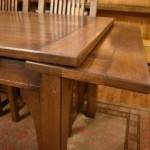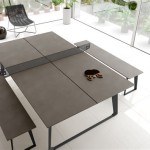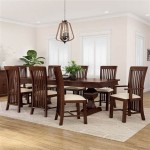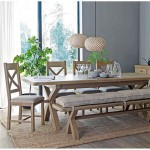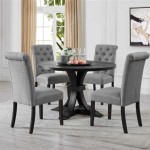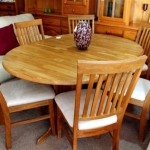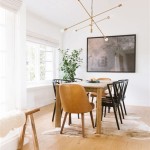The Enduring Elegance of White Marble Oval Dining Tables
White marble oval dining tables represent a significant investment for those seeking to enhance the aesthetic appeal and functionality of their dining spaces. These tables are renowned for their timeless beauty, durability, and versatility, making them suitable for a wide range of interior design styles, from classic to contemporary. The inherent qualities of white marble, coupled with the elegant oval shape, provide a sophisticated focal point for any dining room.
The selection of a white marble oval dining table involves careful consideration of several factors, including the type of marble, the table's size and proportions, the base material and design, and the overall integration with the existing décor. Understanding these aspects is crucial to ensuring that the chosen table meets the specific needs and preferences of the homeowner.
The Allure of White Marble: Types and Characteristics
Marble, a metamorphic rock formed from recrystallized carbonate minerals, predominantly calcite or dolomite, has been prized for its beauty and durability for centuries. White marble, in particular, is highly valued for its purity and ability to reflect light, creating a bright and airy ambiance. However, not all white marble is created equal. Different types of white marble exhibit varying characteristics in terms of veining, coloration, and porosity.
Carrara marble, quarried in the Carrara region of Italy, is perhaps the most well-known type of white marble. It typically features soft, feathery gray veining on a white or light gray background. Carrara marble is relatively porous, which means it is more susceptible to staining compared to some other types of white marble. Regular sealing and careful maintenance are necessary to preserve its pristine appearance.
Calacatta marble, also from Italy, is considered a more luxurious and premium option. It is characterized by bolder, more dramatic veining in shades of gray and gold, often set against a brighter white background than Carrara. Calacatta marble is generally less porous than Carrara, offering greater resistance to staining and etching. Its distinctive veining patterns make each slab unique and visually striking.
Statuario marble, another Italian variety, is renowned for its exceptional whiteness and clarity. It features minimal veining, typically consisting of subtle gray lines against a pure white background. Statuario marble is often used in high-end applications where a clean and minimalist aesthetic is desired. Similar to Calacatta, it commands a higher price point due to its rarity and superior quality.
Beyond these prominent Italian varieties, other white marble options are available from different regions around the world. These may include variations in color, veining patterns, and porosity. When selecting a white marble oval dining table, it is essential to understand the specific characteristics of the marble type and its implications for maintenance and longevity.
The porosity of marble is a critical consideration. Porous marble is more absorbent, making it vulnerable to stains from spills of liquids such as wine, coffee, or oil. Etching, caused by acidic substances like lemon juice or vinegar, can also damage the surface of porous marble. Regular sealing with a high-quality sealant is crucial to protect the marble from these potential hazards. Additionally, prompt cleaning of spills and the use of placemats and coasters can help to minimize the risk of staining and etching.
The Oval Shape: A Symphony of Form and Function
The oval shape of a dining table offers a unique blend of aesthetic appeal and functional advantages. Unlike rectangular tables, which can feel somewhat formal and rigid, oval tables exude a sense of softness and fluidity. The absence of sharp corners promotes a more intimate and conversational atmosphere, allowing diners to interact more easily with one another.
From a spatial perspective, oval dining tables can be particularly well-suited for smaller dining rooms or spaces with irregular shapes. The rounded form allows for easier navigation around the table, minimizing the risk of bumping into sharp corners. In larger dining rooms, an oval table can serve as a visual anchor, creating a focal point that draws the eye and defines the space.
The oval shape also contributes to a more egalitarian dining experience. At a rectangular table, the individuals seated at the ends often assume a position of perceived authority. An oval table, on the other hand, fosters a sense of equality among diners, as there is no distinct "head" of the table. This can be particularly beneficial for fostering collaboration and open communication during meals.
The size of the oval dining table should be carefully considered in relation to the dimensions of the dining room and the number of people who will typically be seated at the table. Too small a table will feel cramped and uncomfortable, while too large a table will overwhelm the space and impede movement. A general guideline is to allow at least 36 inches of space between the edge of the table and any surrounding walls or furniture.
The length and width of the oval table should be proportional to each other. A table that is too narrow will not provide sufficient space for place settings, while a table that is too wide will make it difficult for diners to reach across the table. The ideal proportions will depend on the specific dimensions of the dining room and the desired seating capacity.
Base Materials and Design: Complementing the Marble Top
The base of a white marble oval dining table plays a crucial role in both its structural integrity and its overall aesthetic appeal. The base material and design should complement the marble top, creating a harmonious and visually cohesive piece of furniture. A wide range of base options are available, each with its own unique characteristics and advantages.
Metal bases, typically made of steel or iron, offer a modern and industrial aesthetic. They can be powder-coated in a variety of colors to match or contrast with the marble top. Metal bases are known for their strength and durability, providing excellent support for the heavy marble top. They can be designed in a variety of shapes, from simple geometric forms to more intricate and sculptural designs.
Wooden bases provide a warmer and more traditional aesthetic. They can be crafted from a variety of wood species, such as oak, walnut, or maple, and finished in a range of stains and varnishes. Wooden bases can be designed to complement the veining patterns in the marble top, creating a cohesive and natural look. They can also be carved with intricate details, adding a touch of elegance and sophistication.
Stone bases, often made from marble or other natural stones, offer a luxurious and opulent aesthetic. They can be designed to match the marble top, creating a seamless and monolithic look. Stone bases are extremely durable and provide excellent stability. However, they can be quite heavy and may require professional installation.
Glass bases offer a minimalist and contemporary aesthetic. They create the illusion of a floating marble top, allowing the beauty of the marble to take center stage. Glass bases are typically made of tempered glass for safety and durability. They are relatively easy to clean and maintain, but they can be susceptible to scratches and fingerprints.
The design of the base should also be carefully considered in relation to the overall style of the dining room. A sleek and minimalist base will complement a modern or contemporary setting, while a more ornate and traditional base will be better suited for a classic or formal dining room. The height of the base should also be appropriate for the desired seating height. A standard dining table height is typically around 30 inches.
The choice of base material and design ultimately depends on personal preferences and the overall aesthetic goals of the homeowner. It is important to select a base that is not only visually appealing but also structurally sound and capable of supporting the weight of the marble top.

Cone Oval Dining Table

Saarinen Oval Dining Table 78

78 74 Modern Marble Round Classic Minimalist White Oval Dining Table Set For 6 8 Glossy Sintered Stone Tabletop Roman Column Frame Legs

Oval Marble Dining Table Choice Of Size Onske

Eei1659whi By Modway Lippa Oval Artificial Marble Dining Table 78 White Berk S Furniture Mattress

Silhouette Pedestal Dining Table Oval White Marble

78 74 Modern Marble Round Classic Minimalist White Oval Dining Table Set For 6 8 Glossy Sintered Stone Tabletop Roman Column Frame Legs Furniture Made In China Com

Chapman Marble Oval Dining Table

White Marble Oval Dining Table Design Ideas

Tulip Table Oval Marble 170cm The Natural Furniture Ltd

